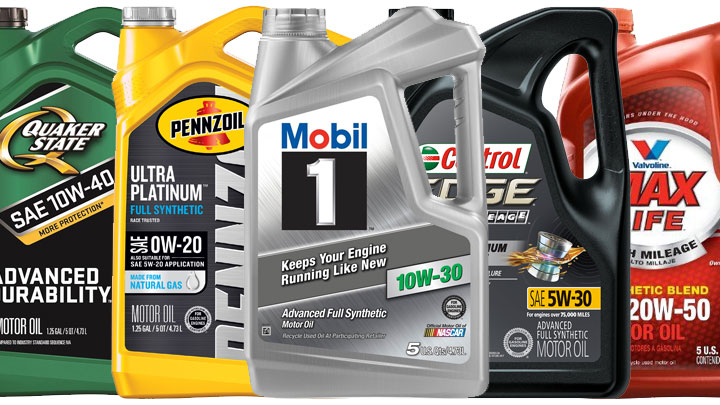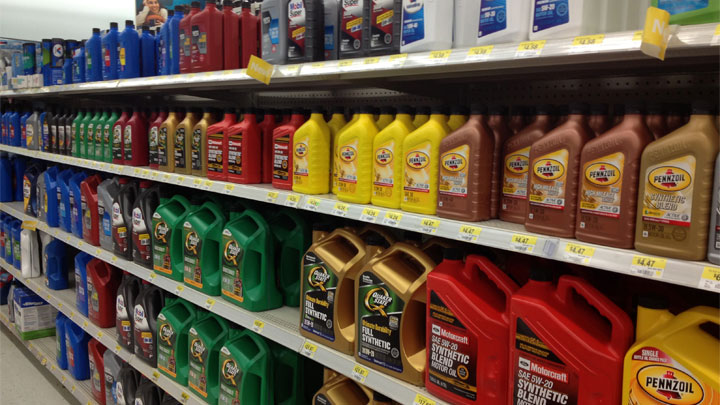What Do the Numbers on Motor Oil Mean?
Choosing the right oil goes beyond synthetic or conventional. You also need to pay attention to the numbers on the label of the motor oil. You might see something like “10W-30” or “5W-20” and wonder what the heck they mean.
Whether changing oil yourself or at a shop, those codes on the bottle or sticker matter. Here’s everything you need to know to understand exactly what those numbers on oil mean so you’re not having to re-do that oil change.

Related: Symptoms of Using the Wrong Engine Oil
Oil Viscosity
The 1st Number
The number to the left of the W refers to the oil viscosity when the temperatures are low. The number to the right of the W refers to the oil viscosity at hotter temperatures.
If the first number is low, it means that you have thin oil. Whenever there are colder temperatures in your environment, it is better to have thin oil in your engine. Otherwise, it will be harder for thicker oil to flow throughout your engine and lubricate its components.

The 2nd Number
The second number will be dependent on two things; the temperature of your engine and the heat of your environment. If you live in a tropical area with a lot of heat, you will want this second number to be high because it means the oil is thick. It is good to have thick oil in hot temperatures because it will do a better job of lubricating the engine’s components.
In the US, two common motor oils in use are 10W-30 or 10W-40. If you live in an area that has very cold winters like Michigan or pretty much all of Canada, you might need even thinner oil like 0W-30. Likewise, if you live in a very hot climate like Arizona, you could be using 10W-40, 20W-50, or 15W-40.
If you check the owner’s manual of your vehicle, they will tell you the proper viscosity oil grade to use in your vehicle. However, the manufacturer doesn’t always take into account where you are living in the world or where you might be relocating too with your vehicle.
Therefore, you need to understand the various types of motor oils so that you can make your own best judgment.
- Replace the Engine or Replace the Car? (11 Factors to Consider) - Apr 11, 2024
- Plastic Piece Dragging Under Your Car? (What It Is and What To Do) - Mar 21, 2024
- Timing Belt vs Timing Chain (What’s the Difference?) - Feb 27, 2024

If you take your car to a garage to have your oil changed, make sure the kids changing your oil understands the importance of these two numbers. My wife took her 2013 VW Passat to a tire shop to have her oil change. My son over heard the conversation between the two boys. Once said “we don’t have any 5W-40 and the other said “Oh, just use the 10W-40”. Unfortunately my son didn’t say anything at the the time. In a matter of a week or two we had to replace a $6,000 engine and couldn’t prove that they used the wrong oil. The engines of today have such tolerances that difference between 0W, 5W, and 10W are huge.
I doubt the 5 point difference between 5W-40 and 10W-40 was enough to cause engine failure, especially in such a short amount of time. They both run at the same viscosity at operating temperature.
you say:
The number to the left of the W refers to the oil viscosity when the temperatures are low. The number to the right of the W refers to the oil viscosity at hotter temperatures.
question:
In the case of 10W-30, does that mean that this oil has a higher viscosity at a hotter temperature, since 30 is greater than 10?
The answer given is: NO… And that’s it!
So, what does it mean? nobody explains, can you?
Thanks
Oil at operating temperature is much thinner than cold oil, even though the number on the right is a higher weight (i.e. more viscous).
SAE 30 oil at cold or ambient temperatures would be very thick; far too thick for most engines. SAE 10 at operating temperature is far too thin, and would not properly lubricate the bearings.
10W30 is a compromise between the two. The additives in the oil are formulated so the oil behaves like SAE 10 in cold temperatures, but it behaves like SAE 30 at operating temperature. It is essentially the best of both worlds.
This is a fantastic explanation of something we all take for granted until the day we actually need to add oil to our vehicles.Otherwise we rarely ever think of such things . Like today 🙄 but I am still a bit uncertain if I have to use the 5w-20 called for on the vehicles oil cap or if it’s IK to use the 5w-30 that I have on hand? Also, which number, right or left, is more important to pay attention to?
The number on the right is most important. The number on the right is the weight of the oil at operating temperature. The “W” stands for “winter”, so the left number indicates the weight of the oil in colder temperatures (i.e. when you first start the engine).
Check your owner’s manual for your vehicle to see if 5W30 can be used in place of 5W20. It’s probably fine, but I would follow the manufacturer’s recommendation on that.
My country is in tropical zone.toyota Porte 2008 1.3 engine,workshop always use 10w 30 .Is it ok for my car?
When in doubt, use the oil weight that is recommended in the owner’s manual. If you’ve lost the owner’s manual, you should be able to find a digital copy by searching online.
I’ve Always used 5w30 castrol
Oil in my 1994 cutlass.
They put in 10w30.
Will this hurt my engine.
I’m in a lower climate area also.
That’s really not much of a difference. You’ll be fine.
I now have an understanding of what is going on in my engine through the season. Great advice. Thanks.
You made it simple and it’s well understood!
Thanks!